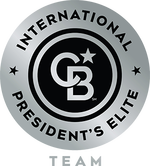St. Louis is no stranger to historic architecture.
In this article, we’ll look at the eight certified local historic districts in St. Louis, Missouri.
- Soulard
- Hyde Park
- Fox Park
- Compton Hill
- Shaw Neighborhood
- Central West End
- Visitation Park
- Skinker-DeBaliviere-Catlin Tract-Parkview
1. Soulard
Today, the Soulard neighborhood is known for its history and lively bar scene.
The neighborhood hosts the second-largest Mardi Gras celebration in the country and is home to the Anheuser-Busch Brewery.
It’s also one of the oldest neighborhoods in St. Louis, MO.
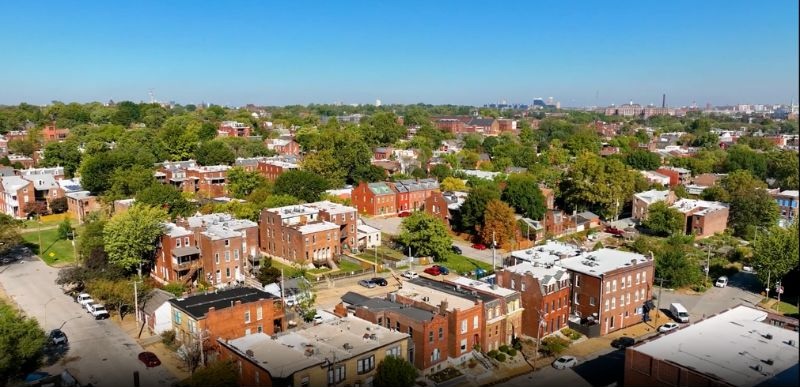
This land was originally part of Cerre Farm, given to Antoine Soulard and his wife, Julia Cerre Soulard.
After Antoine’s death, Julia Soulard donated two acres to the city for Soulard Market and additional land for St. Vincent de Paul Church.
The market was established in the 1840s and expanded in 1865, while construction on the church began in 1843.
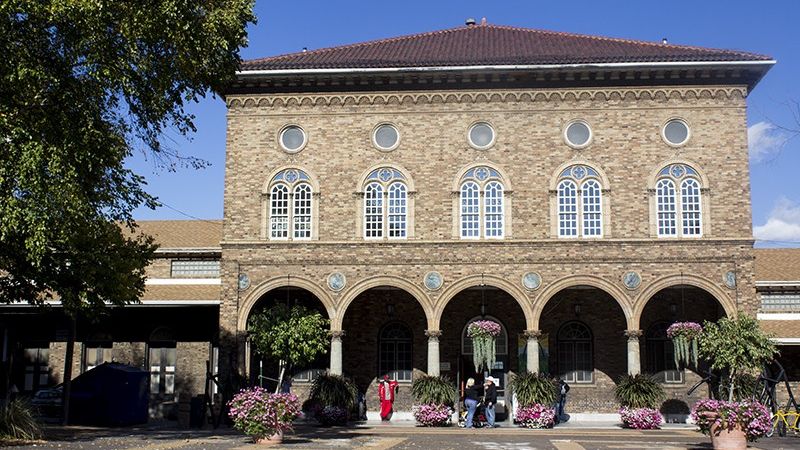
Both landmarks are in use today, with the Soulard Farmers Market being the oldest operating public market west of the Mississippi River!
Soulard has a variety of housing that reflects the history of the area.
Some of the oldest homes in the area were farmhouses.
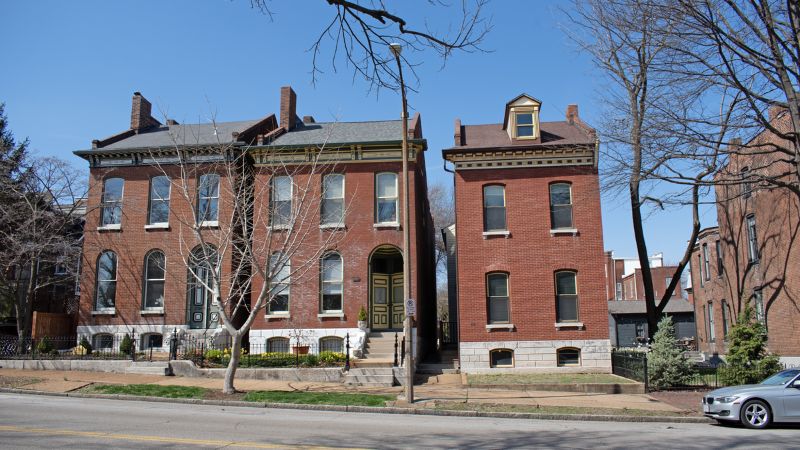
Around the late 1840s and early 1850s, the St. Louis area saw a large influx of German immigrants.
Many of these immigrants settled in Soulard to be close to the breweries.
Other Immigrants from Eastern Europe eventually earned the area the nickname “Bohemian Hill.”
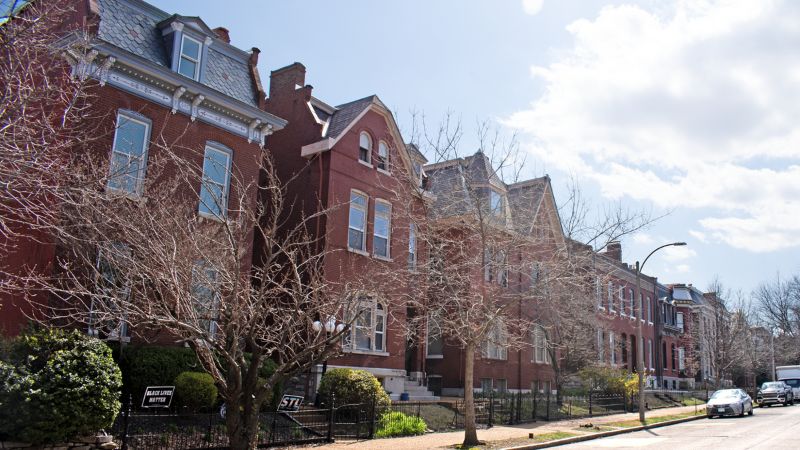
After the Civil War, many affluent residents and beer barons built mansions in the area: Adam Lemp, Eberhard Anheuser, and Dr. Franz Artzt.
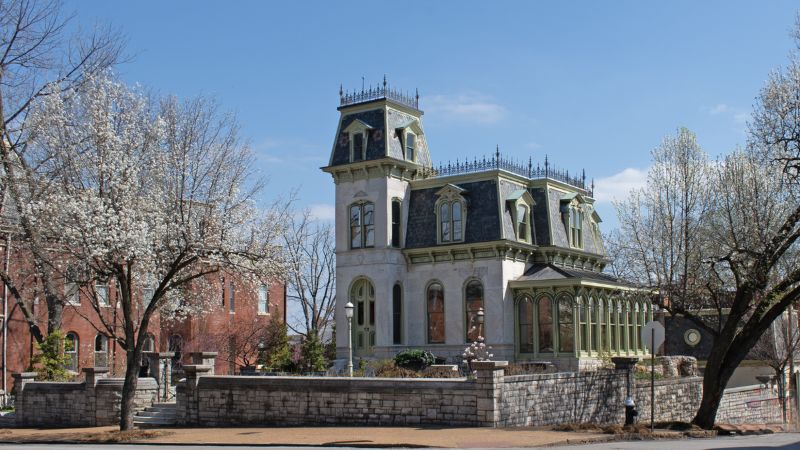
Many historic buildings and homes that define Soulard are still in use today.
And newer developments like the Soulard Market Lofts incorporate the old with the new.
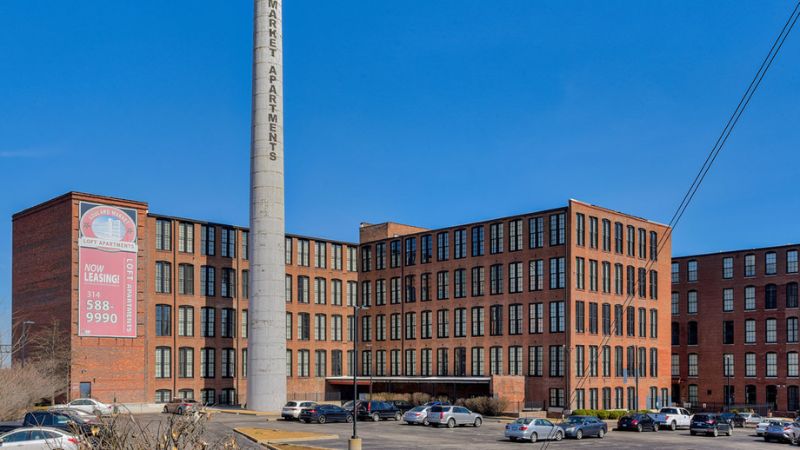
2. Hyde Park
Hyde Park is north of Downtown St. Louis between Fairground Park and the McKinley Bridge, near the Mississippi River.
It features some of the city’s oldest architecture and is neatly situated around the heart of the neighborhood, Hyde Park, established in 1854.
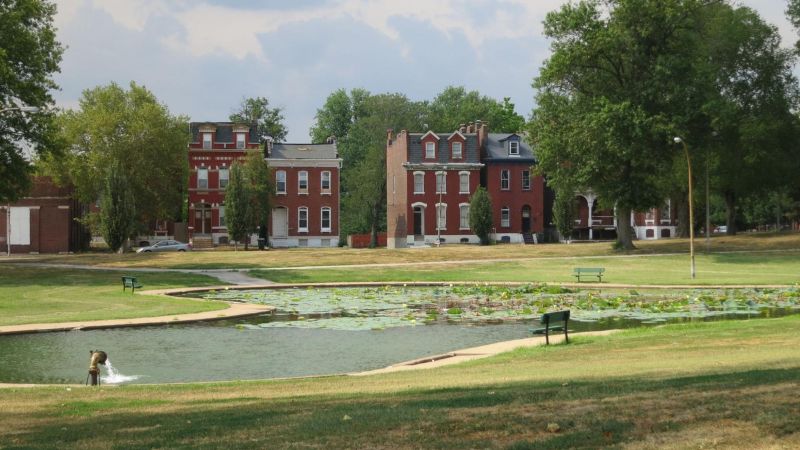
This German-influenced neighborhood used to be part of the town of Bremen.
In the 1800s, it housed workers for the nearby breweries and brick factories.
It became a hub of commercial and industrial activity by the mid-1800s.
Bremen became Hyde Park when it was annexed by St. Louis around 1856.
The neighborhood fell into a state of decline after WWII.
Today, local leaders and an active neighborhood association are working to revitalize Hyde Park. They are focusing on historic preservation to maintain its residential character.
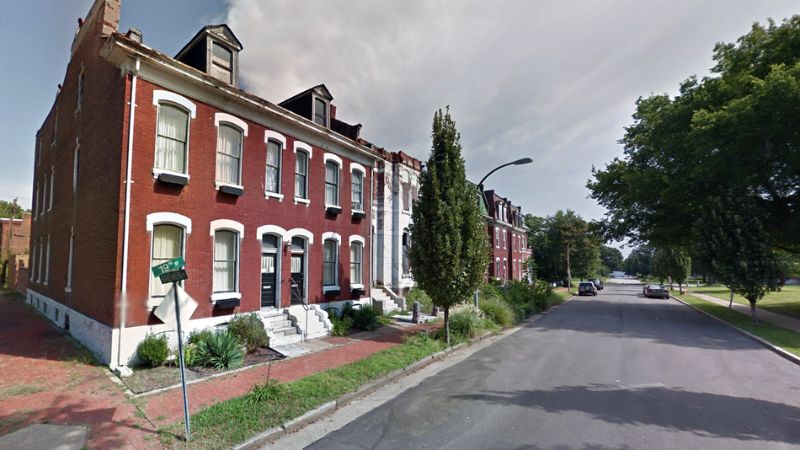
Hyde Park is home to a rare two-story Second Empire-style house, one of the few remaining in historic neighborhoods of St. Louis.
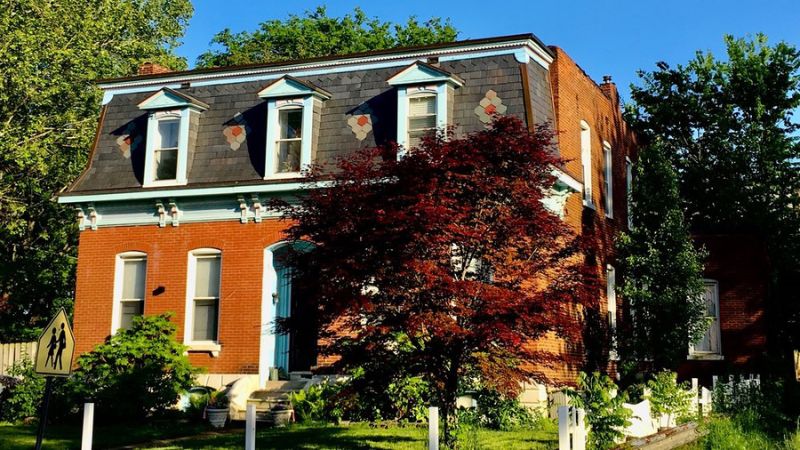
Hyde Park is also home to several historic gems.
The Divoll Branch Library, constructed in the early 1900s, was recognized by the Riverfront Times as the “Best Old Building” in its 2019 Best of St. Louis awards.
Although the library is closed, plans are underway to transform it into an arts and science museum.
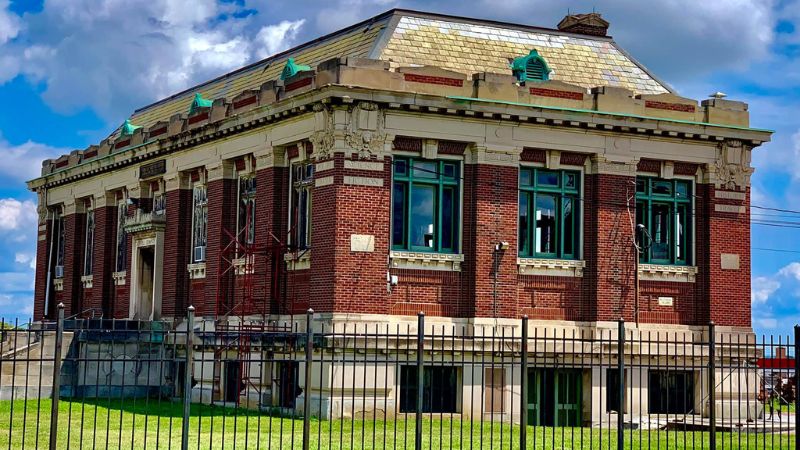
The Most Holy Trinity Church on 14th Street, a designated City Landmark, was built in 1898 in the Neo-Gothic style and continues to serve as a community space today.
The Fifth District Police Headquarters was built in 1938 and looks like something out of an old movie. It’s currently being used by the Parking Meter division and as a polling place.
Hyde Park Brewery was the major beer producer into the mid-1900s. Some buildings still stand today.
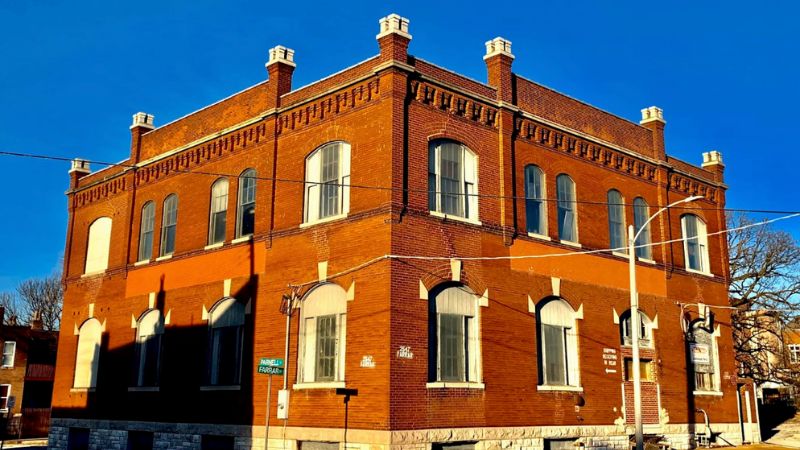
3. Fox Park
Fox Park is a central neighborhood that can be seen for miles around due to its most well-known landmark, the St. Francis De Sales Catholic Church steeple.
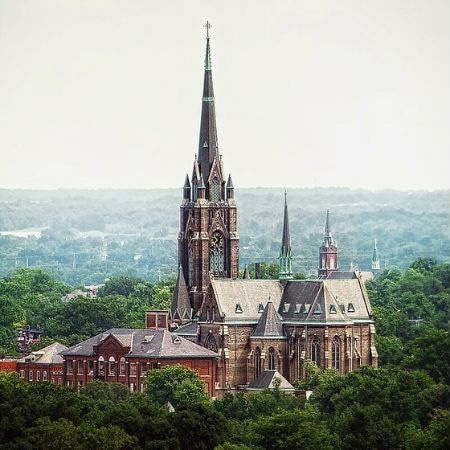
St. Francis De Sales Church began construction in 1867 and was completed in 1908 after a massive setback in 1896 when a devastating tornado hit the area.
Named after a park of the same name, Fox Park’s location makes it very attractive to people looking for affordable housing with quick access to surrounding neighborhoods like:
- Benton Park
- Soulard
- Tower Grove South
- Tower Grove East
- Lafayette Square
Fox Park is also steps away from attractions such as:
- Lafayette Park
- Cherokee Street
- Tower Grove park
Fox Park, like surrounding neighborhoods, was settled by German immigrants.
Many were craftsmen, as reflected in the decorative details of the homes and buildings they built.
Most of these buildings were constructed between 1883 and 1935.
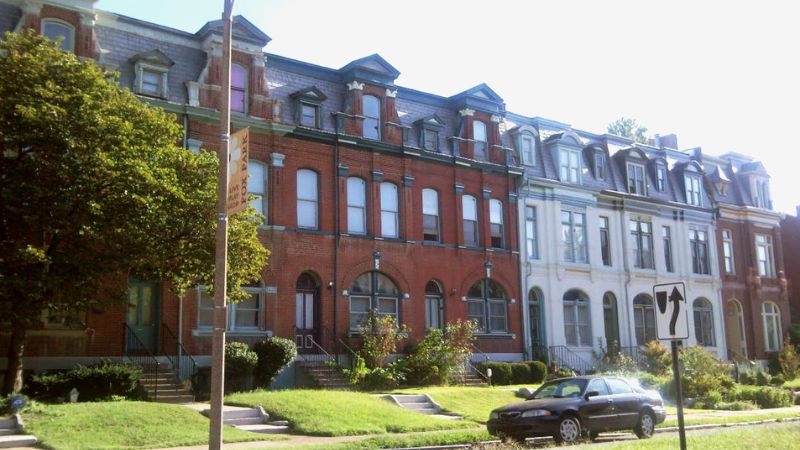
Most of Fox Park’s architecture is residential buildings, with about a third being single-family homes.
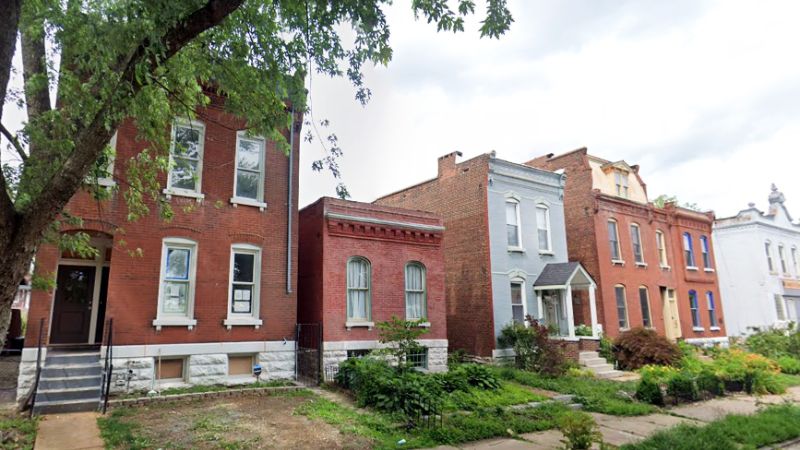
Some of the most well-known, beautiful homes are along Russell Blvd in Fox Park.
The rowhouses pictured below were built in 1887!
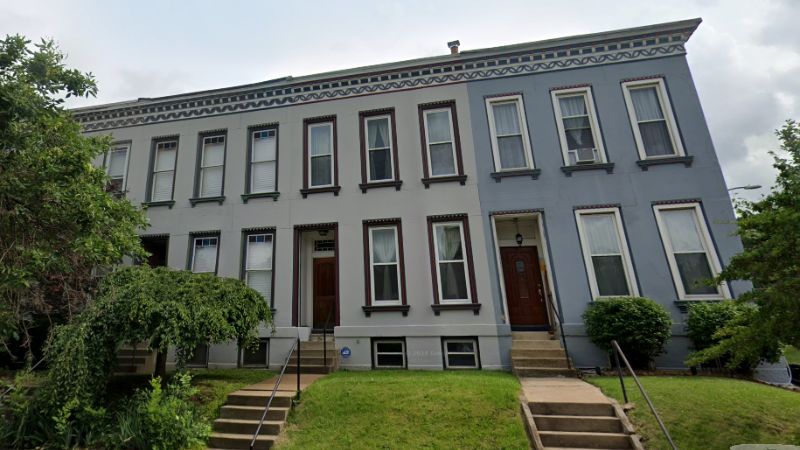
Today, people enjoy this historic neighborhood’s quaint businesses and great location!
4. Compton Hill
Also known as Compton Heights, the Compton Hill Historic District is known for being one of the earliest planned residential areas.
Because of this, you’ll find features you don’t see in other St. Louis city neighborhoods.
Curved streets were created just as much for aesthetics as traffic flow.
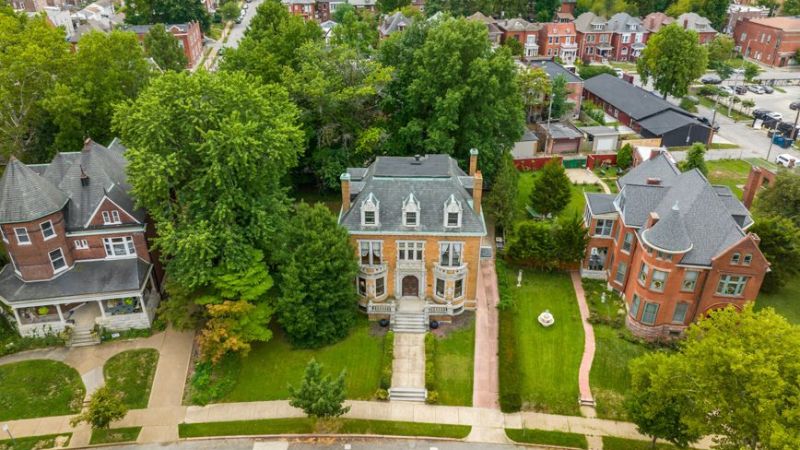
Deed restrictions ensured that certain areas remained single-family residential and that homes had a consistent setback from the street.
While this type of zoning is common today, it was not back in the day.
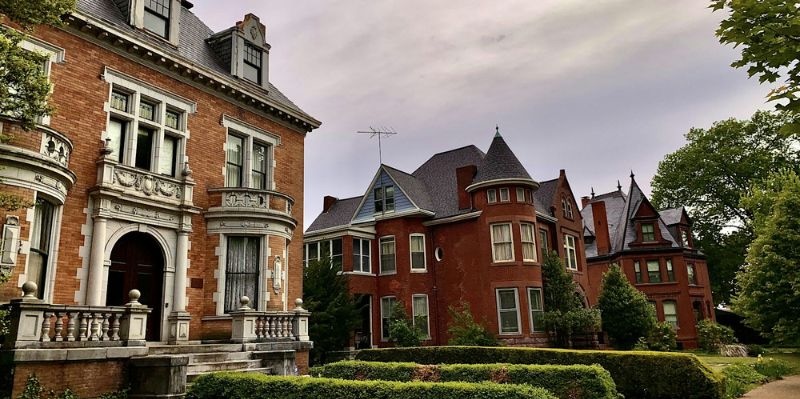
Compton Hill Reservoir Park is a source of pride for St. Louisans in the area and is on the National Register of Historic Places.
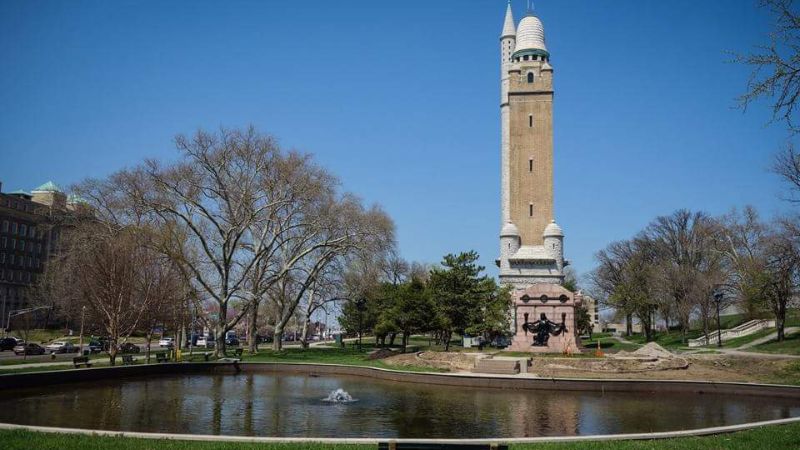
The park sits at the neighborhood’s northwest corner next to Grand Boulevard.
It features a picturesque water tower that was declared a national historic landmark in 1972.
Until recently, people could go up the tower for amazing panoramic city views. It’s currently closed for repairs, but there are plans to reopen it.
A lot of development occurred just before the City of St. Louis hosted the 1904 World’s Fair to accommodate 19 million visitors and showcase the city.
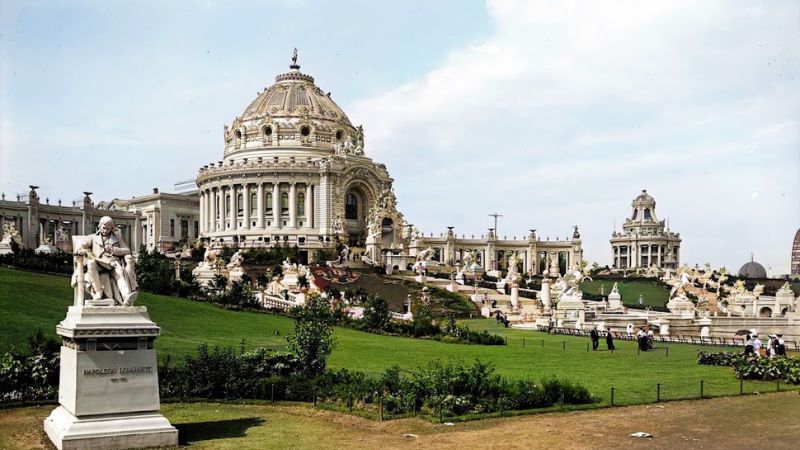
Compton Hill was no exception; many of St. Louis’s most well-renowned families built their homes here.
The neighborhood was founded early by leaders from Anheuser-Busch, Falstaff, Magic Chef, Monsanto Corporation, and Pet.
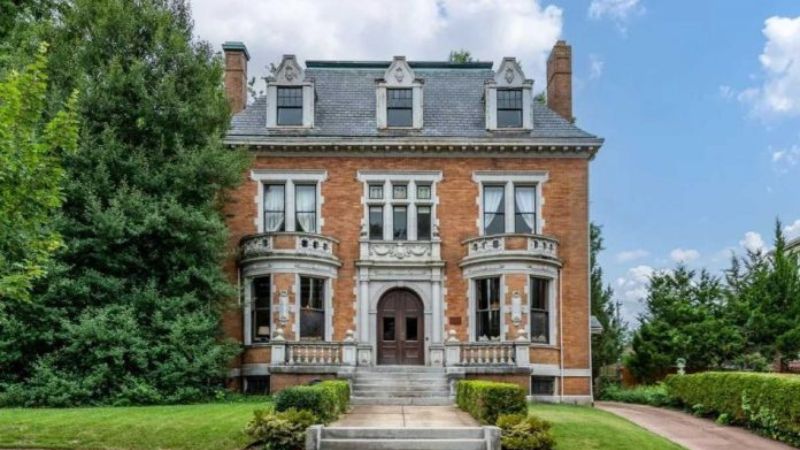
Today, residents enjoy this scenic, historic district’s beautiful architecture and tree-lined streets.
5. Shaw Neighborhood
You can’t talk about Shaw Neighborhood without mentioning the person it was named for: Henry Shaw.
Henry Shaw was a visionary, and after building his wealth and success as a merchant, he turned to see how he could better his adopted home of St. Louis.
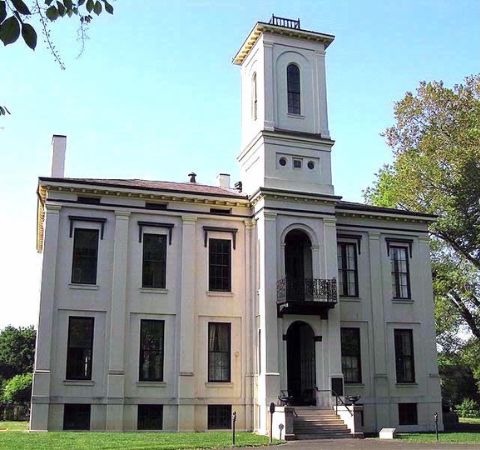
He is responsible for Tower Grove Park and the Missouri Botanical Garden, donating the land for both.
The Missouri Gardens were originally next to his country home in 1858.
Shaw then turned to building homes in the area, completing the 10 Victorian houses that made up Shaw Place in 1883.
These homes still exist today as a private neighborhood.
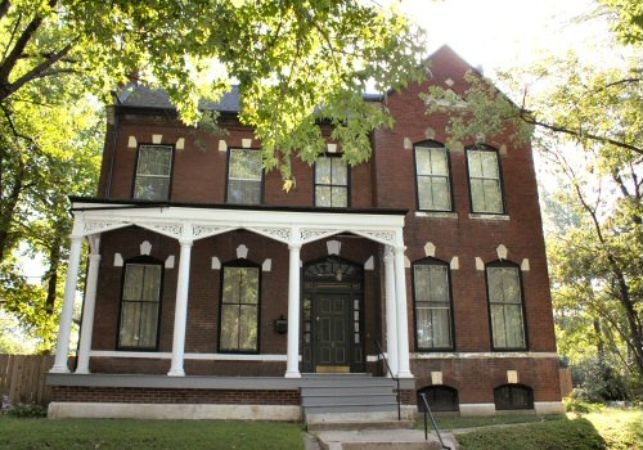
Flora Place is another area of Shaw Neighborhood known for its beautiful historic homes built in the early 1900s.
These came in response to the opening of the Grand Ave Viaduct in 1889, which brought the streetcar lines to the area.
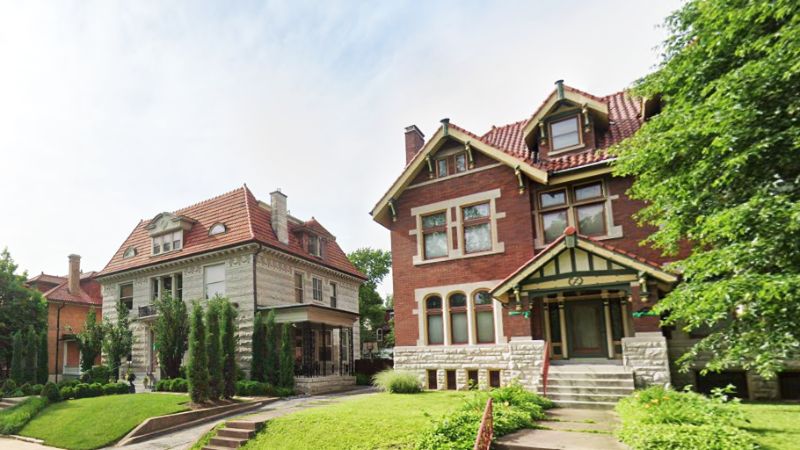
The majority of the Shaw Neighborhood was developed between 1890 and 1915.
The homes range from multi-family buildings to single-family homes.
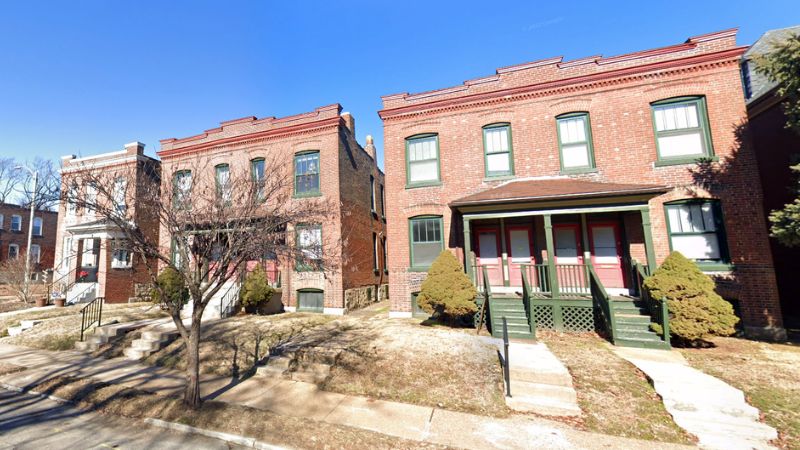
A significant section of Shaw had deed restrictions that limited buildings to two stories.
This drove away some of the wealthier families in the area but attracted middle-class workers who worked in the downtown business district.
Shaw saw some decline in the 1970s and 1980s.
Still, with the help of community leaders and the local Catholic church, Shaw was able to pull together resources to rehabilitate some of the buildings in the area and attract new development.
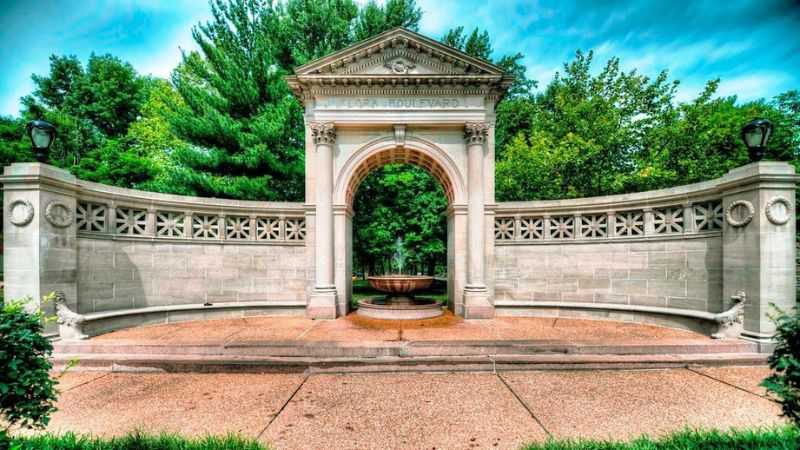
Today, there are a variety of quaint businesses, multi-family homes, and single-family homes with easy access to The Missouri Botanical Gardens and Tower Grove Park.
6. Central West End
The Central West End is well-known among St. Louis residents for its vibrant nightlife and urban setting.
You’ll find plenty of gift shops, art galleries, and antique shops throughout the CWE.
It’s also home to some of the city’s most stunning turn-of-the-century mansions.
These homes are some of the most expensive real estate in St. Louis City.
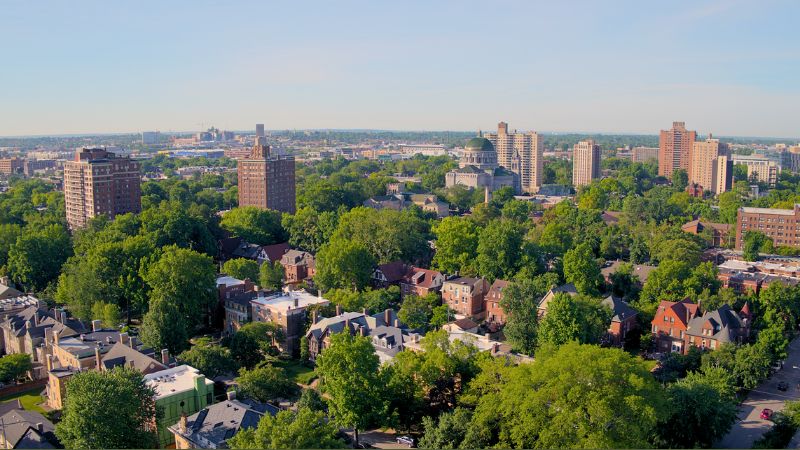
One notable area is Fullerton’s Westminster Place Addition, developed in 1891.
This private street features a variety of architectural styles, including Richardsonian Romanesque, Beaux Arts, Georgian, and Italian Renaissance.
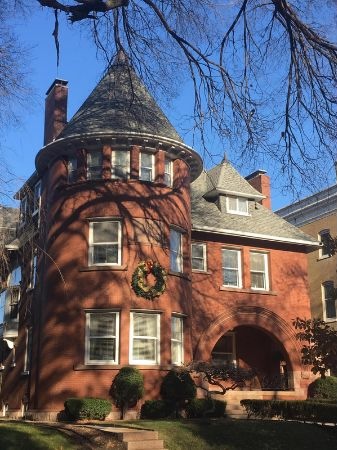
It was also home to several prominent St. Louis figures, such as actress Barbara O’Neil, best known for playing Scarlett O’Hara’s mother in Gone With the Wind.
Pershing Place has its own story as well.
It began as Berlin Ave and was primarily developed as part of the World’s Fair.
One of the homes was even used for the Russian Delegation visiting the fair.
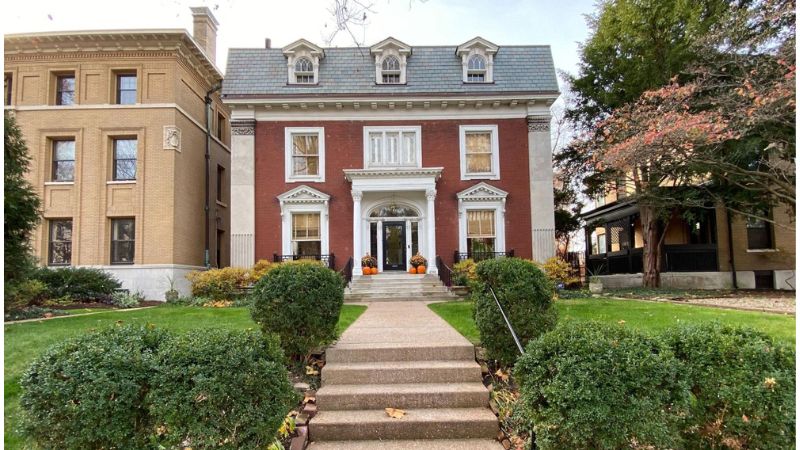
Berlin Avenue was renamed Pershing Place after WWI. In 1953, the residents agreed to take responsibility for the street and make it a private street.
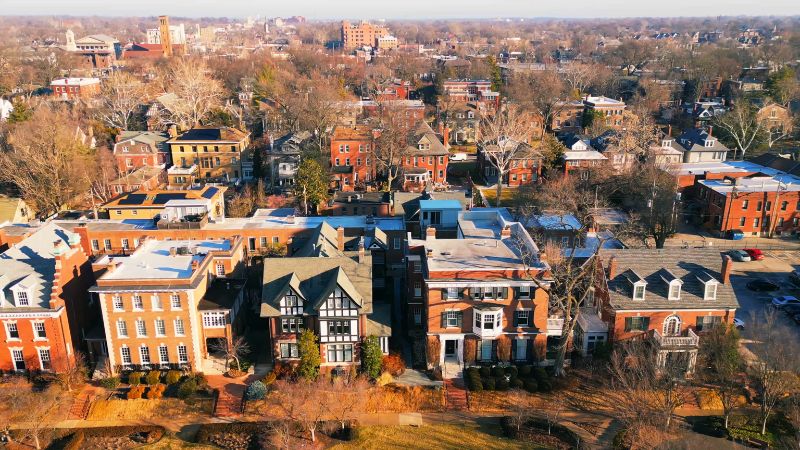
Historic CWE also includes Gaslight Square, popular in the 1950s for its live music, restaurants, art galleries, and clubs.
It was named for its gaslights and Victorian-style architecture and was often compared to Bourbon Street in New Orleans.
It peaked in the early 1960s, attracting entertainers from all over the United States.
Another important landmark is the World Famous Cathedral Basilica of St. Louis.
It was completed in 1914 and draws visitors from all over to view its stunning architecture and artwork, including an 83,000-square-foot mosaic!
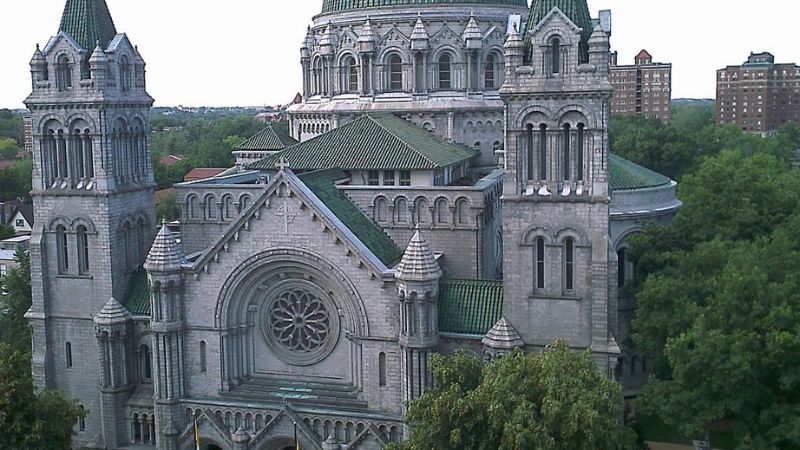
The Central West End is an excellent example of old meets new.
The proximity to nearby places like University City and Forest Park makes it a prime location that blends historic charm with modern conveniences.
7. Visitation Park
Visitation Park is a small but historically rich neighborhood in St. Louis, shaped by waves of development, education, and cultural shifts.
Initially, uncultivated land remained predominantly rural until the late 19th century, when grand estates and private streets like Windermere Place began to take shape.
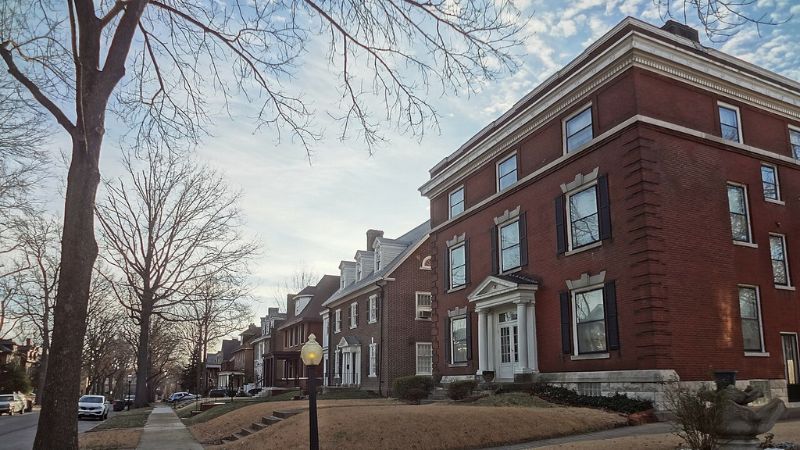
The area saw an increase in construction around the 1904 World’s Fair, attracting exclusive subdivisions and institutions.
One of the defining features of the neighborhood was its role as a hub for education.
Visitation Academy, founded by the Visitation Nuns in 1858, moved to the area in 1892, giving the neighborhood its name.
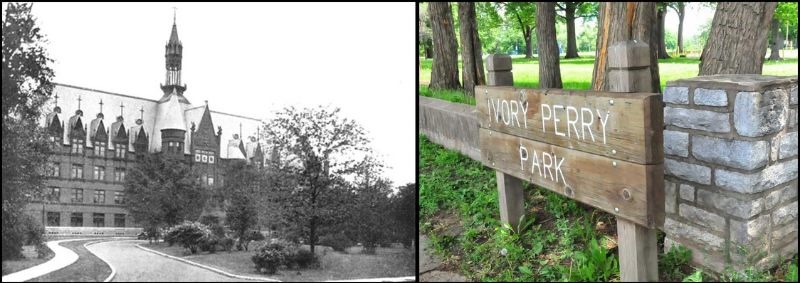
After Visitation Academy moved, the building was demolished. Ivory Perry Park was put in its place.
Other notable schools soon followed, including Smith Academy, the elite boys’ counterpart to Mary Institute, and Soldan High School, once considered the jewel of St. Louis’s public school system.
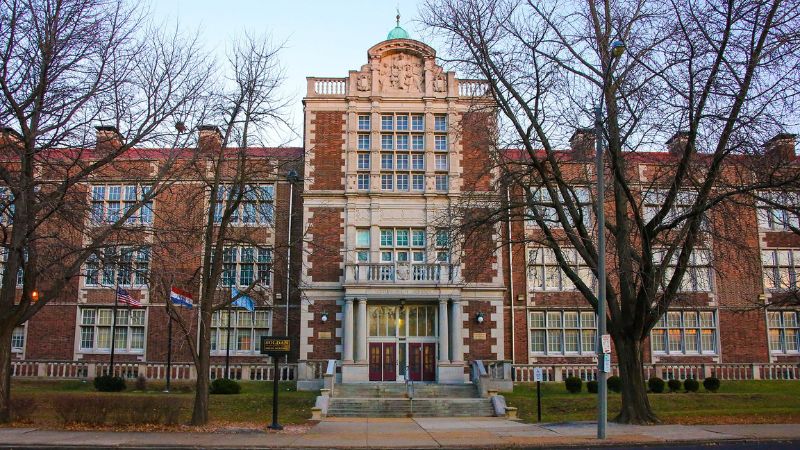
Cultural institutions, such as the St. Louis Artists’ Guild and the Young Men’s Hebrew Association, also settled in Visitation Park.
After World War II, the neighborhood went through a dramatic transformation.
Despite the changes, some institutions, like Pilgrim Congregational Church, chose to stay and adapt to the evolving community.
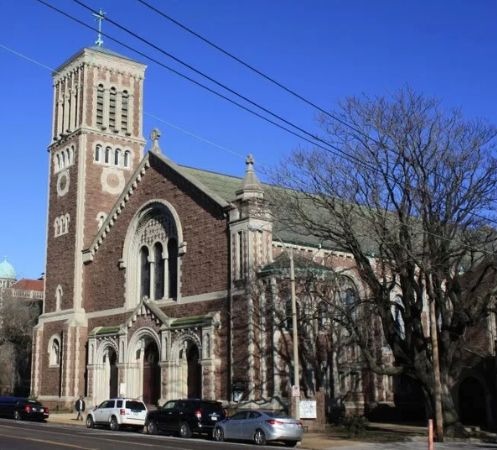
Others, like Visitation Academy, moved west. Its property was sold to the city and turned into Visitation Park (now Ivory Perry Park), giving the neighborhood a lasting landmark.
In the 1970s, Visitation Park was officially recognized as a historic district, preserving its architectural diversity—ranging from grand mansions to large institutional buildings along Union Boulevard.
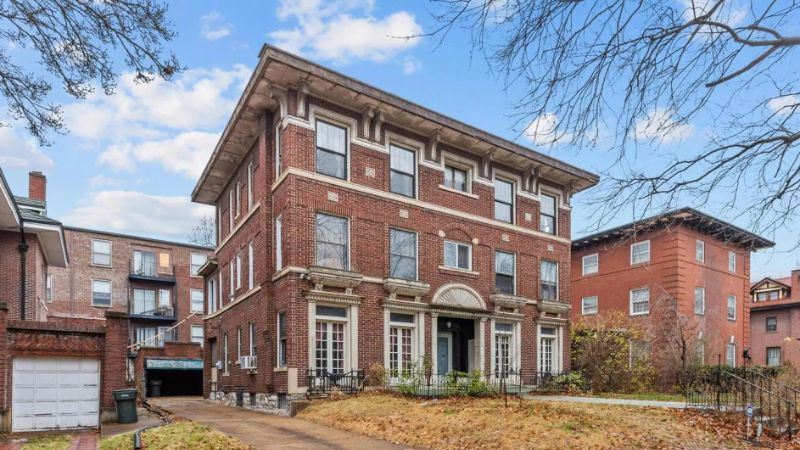
Today, Visitation Park remains a unique blend of history and culture, reflecting the many layers of St. Louis’s past.
8. Skinker-DeBaliviere-Catlin Tract-Parkview
Also known as Skinker-DeBaliviere, this neighborhood was shaped by the World’s Fair.
However, unlike others, most of its development began after the fair, starting in 1905.
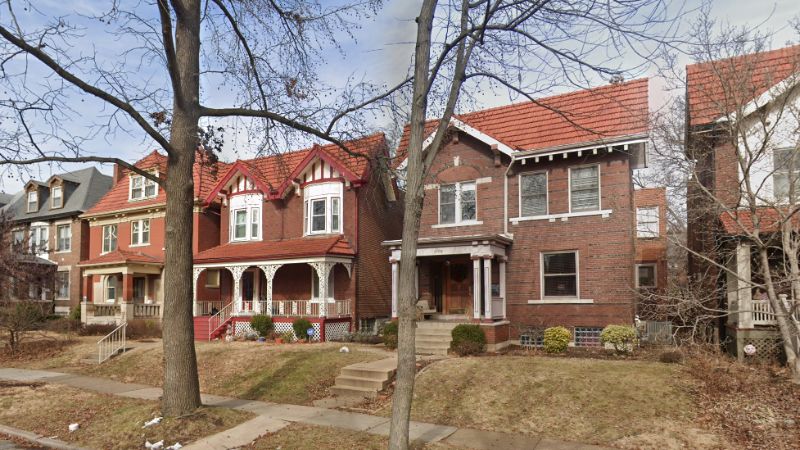
Parkview was the first development in the area, which still exists today as a private subdivision under the name “Parkview Historic District.”
It was designed by Julius Pitzman, the same person who designed Forest Park.
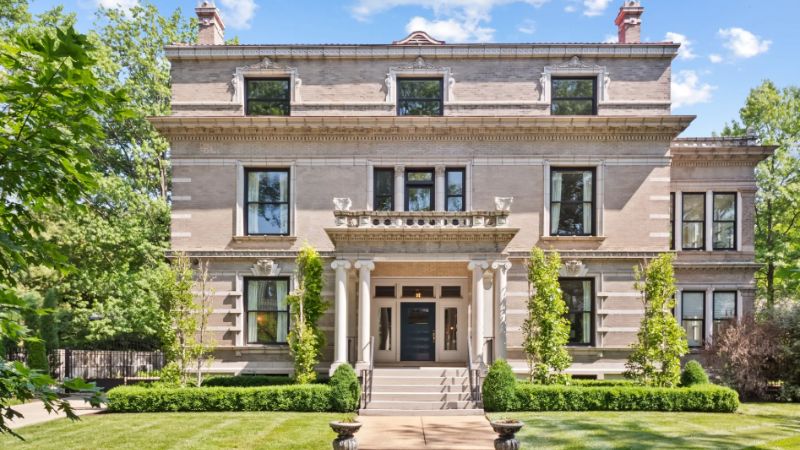
Most of the homes in this beautiful subdivision are three-story brick, with examples of colonial revival and arts and crafts architecture.
Other residential areas followed, with most commercial buildings on DeBaliviere and Delmar Avenues.
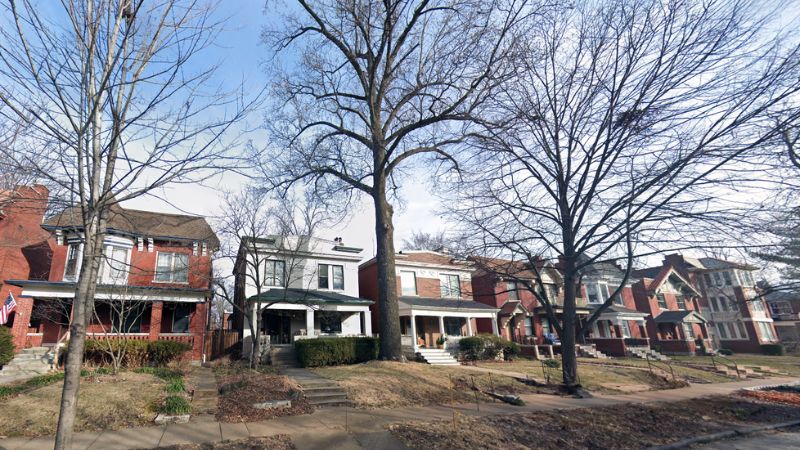
From 1920-1950, the business district was a hotspot for shopping, theaters, restaurants, and four streetcar routes.
The area started to decline in the 60s, but the community came together in the 70s to rehabilitate the area, and Skinker-DeBaliviere-Catlin Tract-Parkview became a local historic district in 1978.
The Delmar Loop, named for the streetcar line, borders the neighborhood and remains a popular hotspot favored by Washington University students and residents.
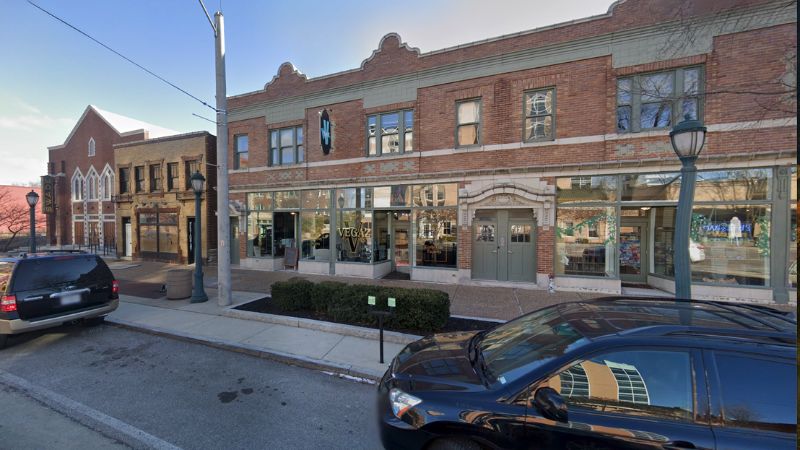
Steeped in history, this entertainment district features the St. Louis Walk of Fame and multiple historical markers that showcase the city’s history.
Historic Saint Louis
These historic St. Louis neighborhoods offer a glimpse into the city’s rich architectural and cultural past.
Many of these residential neighborhoods took shape from the mid to late 19th century into the early 20th century.
From grand historic districts to hidden gems in the city limits, these areas continue to showcase the charm and character that make St. Louis a unique place to call home.





